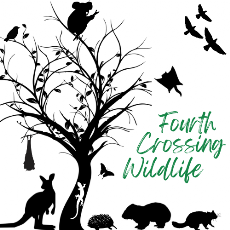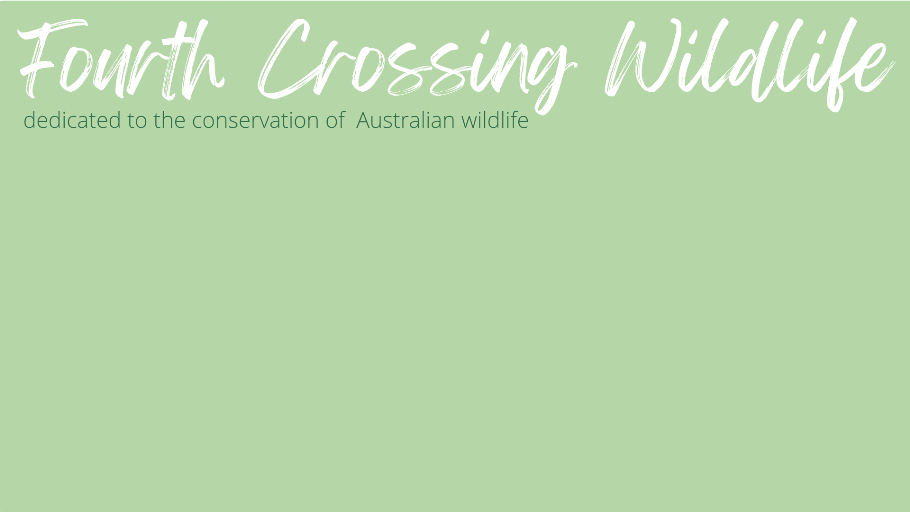Stories
Poor Possum
by Linda Dennis
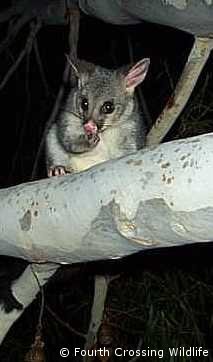 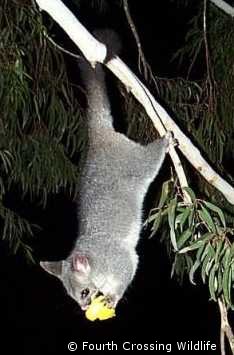 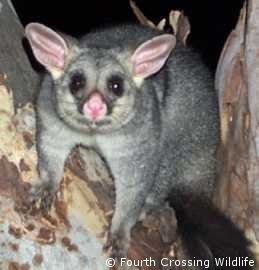 | This possum came to me from an in town carer for release at Fourth Crossing. He was a juvenile Eastern Brushtail Possum, that had reached sexual maturity while in care. When raising any young mammal, with the aim of releasing it back into the wild, it is imperative that the animal be moved to the release site well before sexual maturity, indeed while it is still quite young. This enables the animal to become accustomed to its surroundings - the new sights, sounds and smells. It also enables the "de-humanisation" process that should begin after the joey stage, and well before the animal gains sexual maturity. Current theory is that human contact with a brushtail possum should begin to be gradually withdrawn from around 300 to 400 grams, it is the latter weight when the possum is fully out of pouch. Contact varies with each individual animal however, as some seem to take longer to develop mentally than others. Release weight is approximately 1 to 1.5 kilo's. I didn't weigh the possum when he came into my care, but I estimated him to be a couple of kilos, give or take. This was only part of the possums troubles. He had been raised on exotic fruits, such as custard apples - the kind of food that he wouldn't find in the wild. When he came to us we slowly reduced his exotic food hand outs and increased his natural food offerings, hoping that he would identify such food in the wild and start to forage for himself. Native diet includes gum leaf tips, flowers, fruits, insects and bird eggs. We were dismayed, however, when we discovered he had been raiding the dog food container in the garage - and had been doing so for quite some time. The possum had not been properly de-humanised which was also his ultimate downfall. Let's face it ALL animals that have been raised from from a small size are "humanised" to some degree - it's impossible for them not too. An orphaned Australian native animal in care is not being raised in a natural environment so therefore it is impossible to expect them not to be "touched" my humans to some degree. What we aim for is that a native animal can cope on its own in the wild and be frightened of strangers - human or otherwise. If an animal that a particular carer has raised shows that it is not afraid of other humans, then you pretty much know that the animal will fail in the wild. As such, I would not have been too concerned if the possum had been unafraid of his original carer as there is commonly a bond between animal and human "mum or dad", but he should have been frightened of us and anybody else who went near him. However, this possum was afraid of no-one and nothing. When we realised that the possum had no fear we embarked on a mission of trying to scare him away. He regularly came to sit at our glass sliding door, and would peer inside, so we would bang and crash to try and frighten him away. When we were on the verandah at night he would jump out of the gum tree and prance up to us. We tried running at him, stomping our feet, but he would just sit up on his haunches and look at us quizically. Life in the wild did not look good for poor possum. We had two dogs that we kept away from our native animal charges. Domestic animals and native animals just do not mix, I've learnt that from personal experience. Sadly however, the possum had been raised in a home with a resident dog, which regularly sniffed at him through the bars of his cage. The dog was relatively harmless, but the possum learnt that dogs were nothing to be scared of. Can you guess the rest? One dreadful morning we went to our dogs night lock-up to release them for their breakfast and there was poor possum, dead in front of the dog kennel. There was only one tree in the dog lock-up, not accessible from any other tree, for some reason the possum had climbed the fence and jumped in. We don't feed our dogs in the lock-up so there were no food scraps that might have attracted him in. So, the strong message - if you plan on raising a native animal for release back into the wild it is imperative that you keep it away from all domestic animals. By keeping natives and domestics in the same setting, you end up reducing the instinctual fear that a native animal should have for predator species. Your dog or cat - which are essentially predators to our wildlife - might be harmless, but the dog or cat that the animal encounters once released probably won't be. You also need to ensure that the animal has survival instincts, that is can search for its own food and drey (possum nest) and that it is frightened of all strangers - people, domestic animals and other wild species alike. |
